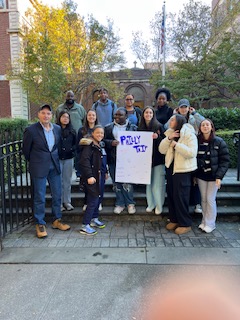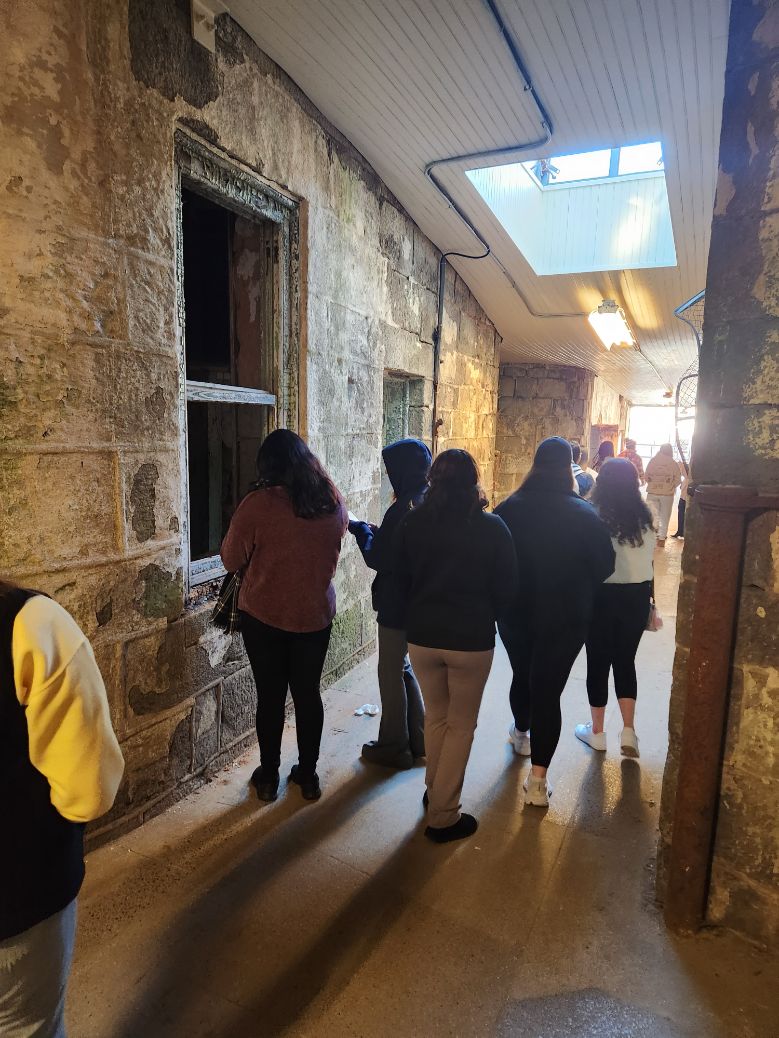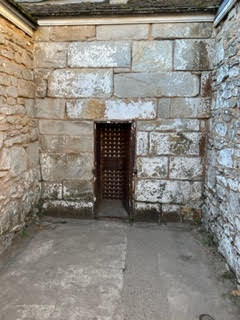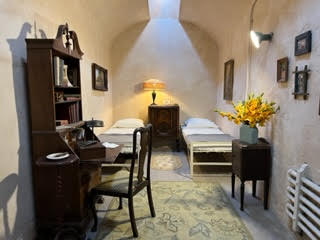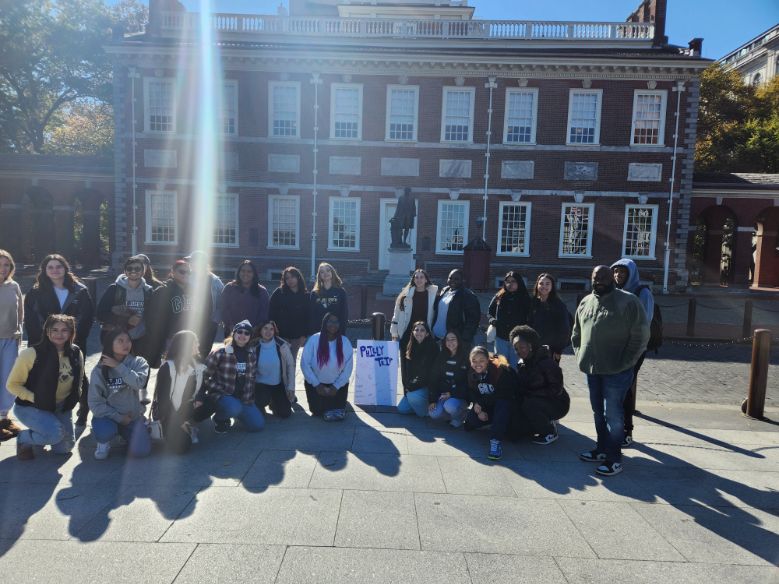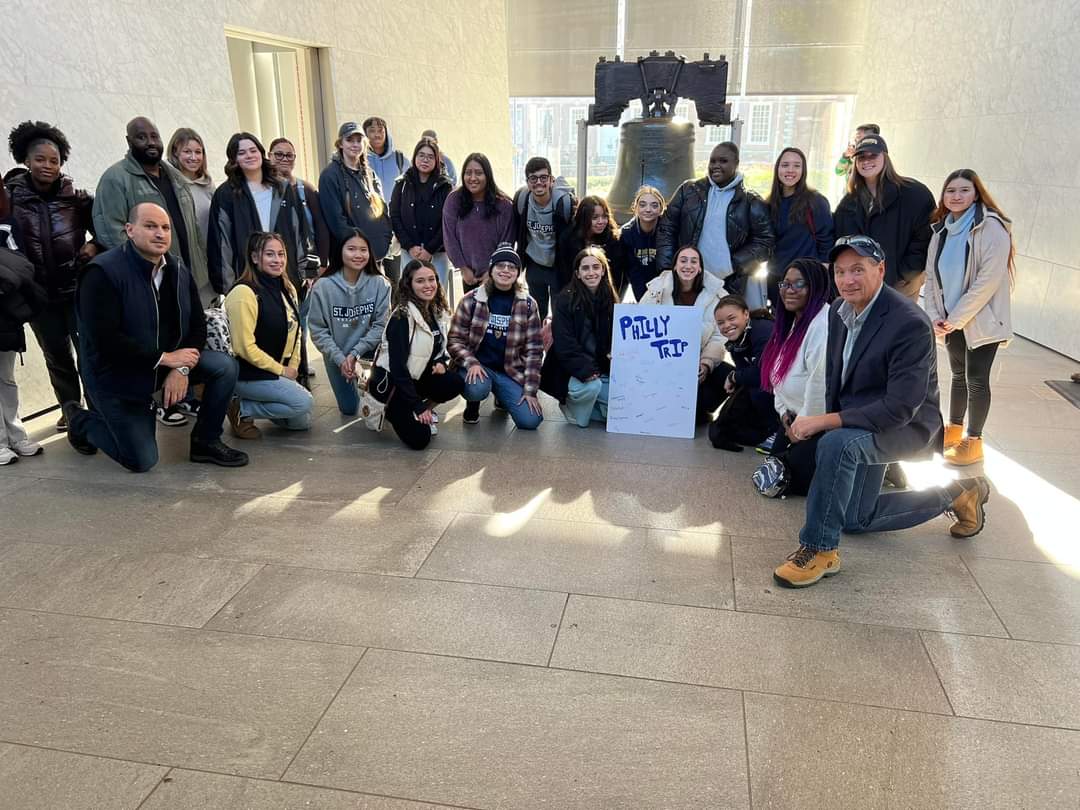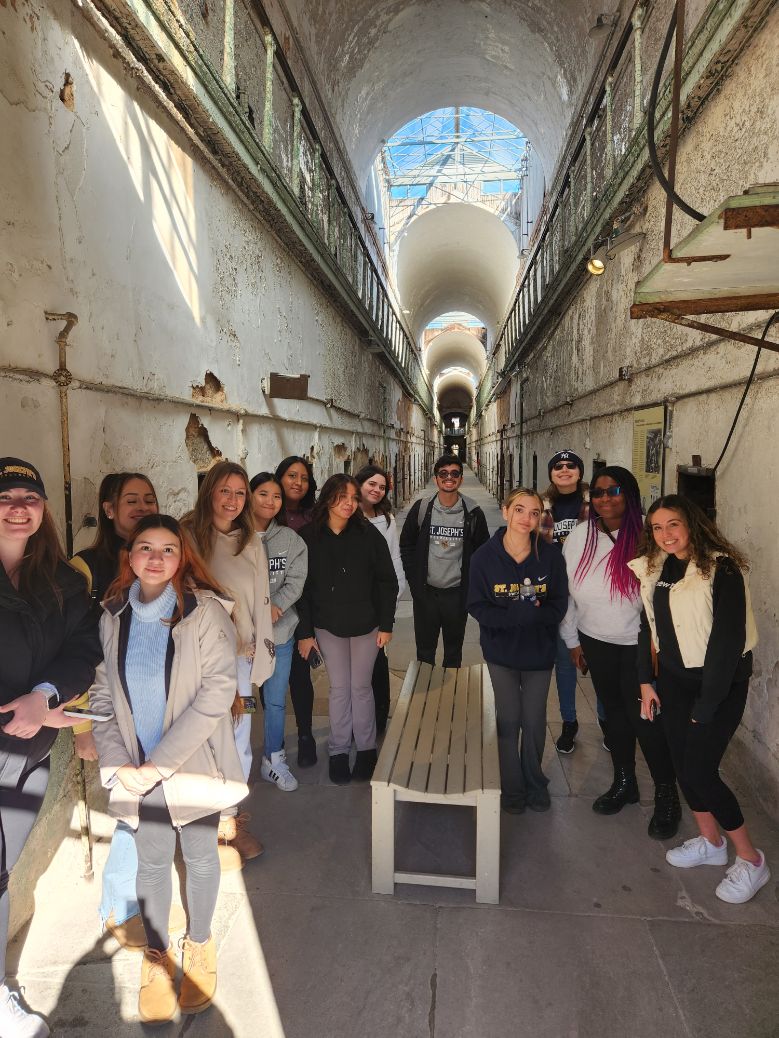Dozens of criminal justice students from St. Joseph’s University, New York’s Long Island and Brooklyn campuses took a field trip last month to the historic Eastern State Penitentiary in Philadelphia.
The one-day visit provided students with a firsthand understanding of the U.S. criminal justice system’s evolution and its role in shaping American history.
Led by Joseph Pascarella, Ph.D., associate professor of criminal justice and associate chair of the University’s Criminal Justice Department, and Jason Ostrowe, Ph.D., assistant professor of criminal justice at the Long Island Campus, the group explored significant landmarks in Philadelphia, including Independence Hall, the Liberty Bell, and the U.S. Constitution Center.
The journey culminated at Eastern State Penitentiary, the country’s first maximum-security prison designed for solitary confinement and isolation from society. The facility took on its first prisoner in 1829, as part of a controversial movement to change the behavior of people convicted of crimes through confinement in solitude with labor. It quickly became one of the most expensive and most copied buildings early on in U.S. history. It closed in 1971.
“It serves a purpose to demonstrate what a prison of that type during that era would look like — how it would feel. I think it does that very effectively,” Dr. Ostrowe said. “The thing that characterized the prison, and still does, is the emphasis on silence and repentance. That’s where we get the penitentiary idea from.”
Dr. Pascarella said the trip allowed students to visualize “the great hope and promise of the American Dream,” starting with the ideals of independence in 1776 and leading to the complexities of the modern prison system.
“The overarching goal of the field trip was to give our criminal justice majors a sense of U.S. history and the role of the criminal justice system,” he said.
The Day in Pictures
Check out photos from the trip below. They were supplied by Brooklyn and Long Island professors in the University’s criminal justice department.
A ‘Captivating Journey’
Brooklyn Campus criminal justice major Diamond Campbell, an executive board member with the campus’ Law and Justice Society, came away from the experience more enlightened on the daily life of a prisoner early in the 19th century.
“Our visit … was a captivating journey,” she said. “Exploring the fascinating artifacts, witnessing the panopticon, and stepping into the cells that once confined prisoners provided great insight into the past.
“It was an educational and eye-opening experience for me that I’m sure left a lasting impression on all of us,” she added.
Traveling with students from both campuses and meeting students from the Brooklyn Campus for the first time added an important social aspect to the educational trip, said Destiny Laurence, a Long Island Campus criminal justice major and Criminal Justice Club president.
“This was the first time I’ve ever met students from the Brooklyn Campus, and I really enjoyed meeting them,” she said. “I made so many friends from this trip, and we’re actually planning on going out to the city together soon — so that’s exciting.”
Laurence noted how touring the closed prison and other sites on the trip fostered a deeper understanding of the complexities and historical roots of the U.S. criminal justice system. She particularly got a kick out of seeing Capone’s cell. “Just to see it in person was really really cool for me,” she said.
Student Kathryn Cardello, a Brooklyn Campus criminal justice major and an executive board member of the Law and Justice Society, came away with a better understanding of Eastern State Penitentiary’s influence on today’s prison structures and goals.
“The trip was an amazing educational experience,” she said. “We were taught about the history of the first-ever penitentiary in the U.S., while standing inside of it. It was surreal.”


